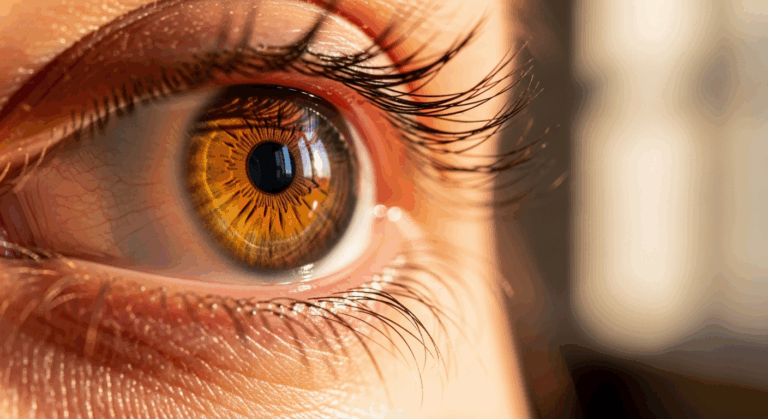We get this question a lot: “Okay, I dropped my glasses — now how do I get scratches out of eyeglasses?” It’s annoying, right? A little scratch can blur your world and make you squint more than necessary. The short answer is: sometimes you can reduce or hide light surface scratches yourself, but deep scratches or damage to coatings usually need professional help or lens replacement. Below I’ll walk you through what works, what’s risky, and how to keep your lenses looking new.
Understand the scratch before you act
Before trying any fix, it’s important to know what you’re dealing with.
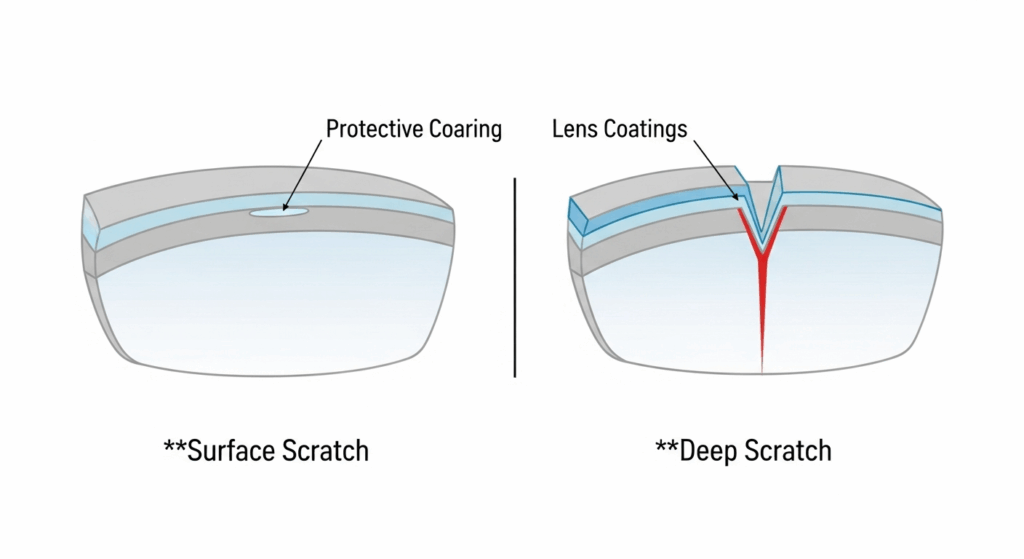
Surface vs. deep scratches
- Surface (fine) scratches — these are shallow, often on the top layer of the lens. Light may scatter, causing minor glare, but the lens surface is mostly intact. These are the only scratches that sometimes respond to polishing or gentle DIY methods.
- Deep scratches — you can feel these with a fingernail. They cut into the lens material and cannot be safely removed; polishing will either fail or thin the lens and distort optics.
Is it the coating or the lens material?
Modern lenses often have multiple coatings: anti-reflective (AR), scratch-resistant, UV, or mirror coatings. If the mark is on a coating, attempting to polish it may remove the coating entirely and make things worse. If your lenses are polycarbonate or have AR coating, be extra cautious — those are common and easily damaged.
Pro tip: Hold the lens to light and tilt it. Coating damage often looks different (patchy, rainbow-y). If in doubt, treat it as coating damage and stop before doing anything abrasive.
Quick fixes you can try at home (use cautiously)
Okay, let’s talk about practical things you can try. Remember: test on a tiny hidden edge first, and don’t do anything abrasive on coated or high-value lenses.
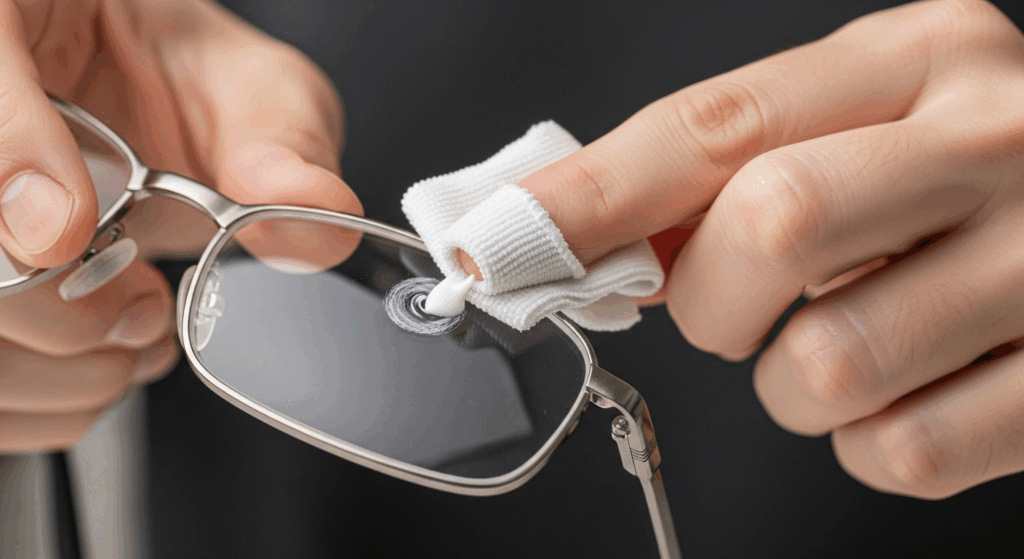
Clean thoroughly first
Sometimes “scratches” are actually smudges or debris in a scratch. Clean your lenses using:
- A microfiber cloth (not your shirt).
- Lens cleaner or a drop of dish soap and warm water.
- Pat dry — don’t rub hard. This step is essential before any polishing attempt.
Non-abrasive polishing with toothpaste (only for uncoated plastic)
This is the home remedy you’ve probably heard about. Non-gel, non-whitening toothpaste can sometimes reduce light surface scratches on plain plastic lenses.
How to:
- Apply a small dab of plain non-gel toothpaste to the lens.
- Use a soft, circular motion with a microfiber cloth for 10–20 seconds.
- Rinse with water and dry with a clean microfiber cloth.
Caveats: Toothpaste is mildly abrasive. It can remove coatings and worsen optical clarity. Don’t use on glass, polycarbonate, or AR-coated lenses.
Baking soda paste (mild abrasive) — similar to toothpaste
Make a thick paste (2 parts baking soda : 1 part water), apply gently, rub in circles for a few seconds, rinse and dry. Same warnings as toothpaste — test first and avoid coated lenses.
Lens-polishing kits & cerium oxide (for glass lenses)
Professional lens polishing kits exist. Cerium oxide is a polishing compound used for glass and hard plastic; it can improve deeper scratches on glass lenses but requires technique and a buffing pad.
Important: Using these without experience risks uneven results or removing coatings. If your lenses are glass (not common these days), a professional optician or jeweler may do a better job.
Use a scratch filler for temporary improvement
Some products (commercial scratch fillers) can temporarily fill fine scratches and reduce glare. They’re cosmetic fixes — they don’t repair the optics and may wear off over time.
Don’t try these — they often cause more harm
- Metal polish, sandpaper, or heavy abrasives.
- Acetone or strong solvents (nail polish remover) — they strip coatings.
- Household glass cleaners with ammonia on coated lenses.
When to avoid DIY — and why professionals matter
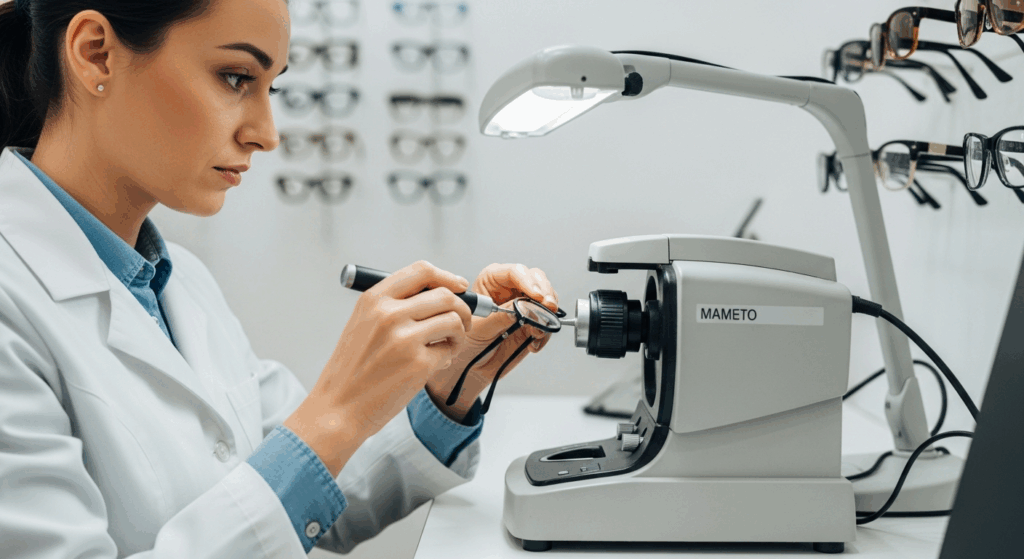
There are times when DIY is a bad idea. Stop and consider a pro if:
- You can feel the scratch with your fingernail.
- Lenses have an AR or scratch-resistant coating.
- You paid a premium for progressive or high-index lenses.
- Scratches affect vision or cause headaches.
Opticians have specialized equipment (rotary polishers, correct polishing compounds) and the know-how to assess whether polishing is feasible or if a replacement lens is the better call. Sometimes they can recoat lenses or replace only the lenses and keep your frames — which is often cheaper than replacing the whole pair.
Expert note: We often tell patients — if the scratch interferes with your vision, it’s a safety issue. Don’t “make do” for long.
Professional repair & replacement options
Lens polishing by an optician or lab
- Best for shallow, non-coated lens scratches (and sometimes for glass).
- Removes a tiny amount of material; repeated polishing shortens lens life.
Recoating or replacing lenses
- If the AR or scratch-resistant coating is damaged, recoating might be possible but often pricey.
- Replacing lenses (keeping your frames) is usually the most reliable fix for deep scratches, especially on polycarbonate or high-index lenses.
Manufacturer warranty or insurance
Check whether your lenses/glasses have a warranty or if you bought them with a protection plan. Some retailers offer free or discounted replacement within a limited time.
Preventing scratches — the easiest fix of all
Prevention is where you get the most value. A scratch avoided is a headache not had.
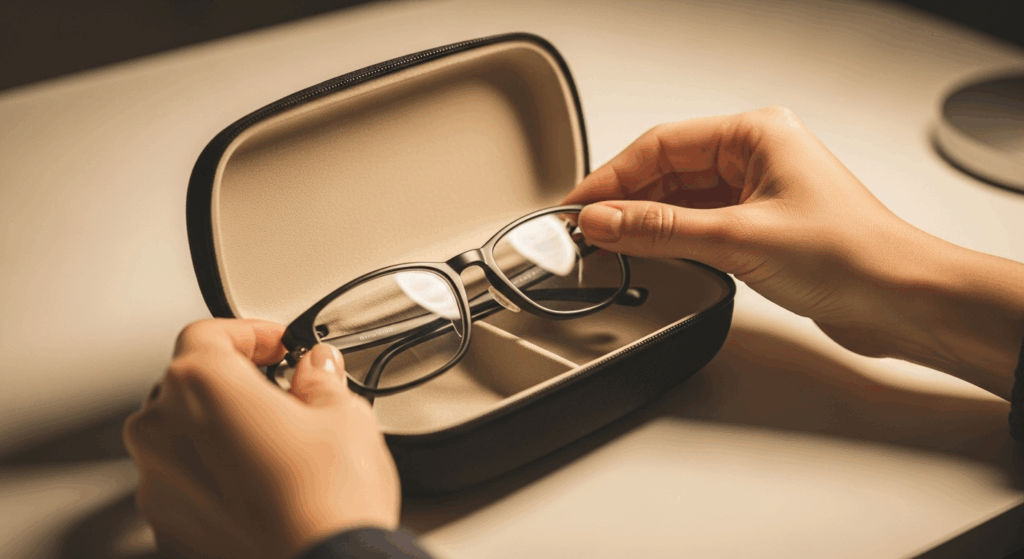
Handling and storage habits
- Always use a hard, lined glasses case when not wearing them.
- Put lenses face-up when setting them down.
- Never wipe lenses dry when dirty — rinse first.
Choose better coatings and lens materials
- Scratch-resistant coatings: They’re not scratch-proof, but they help.
- Polycarbonate vs. glass: Polycarbonate resists impact but is softer and more scratch-prone; glass resists scratches better but shatters on impact.
- Consider anti-reflective (AR) coatings carefully — great for vision but more delicate.
Clean the right way
- Rinse with water, use a drop of gentle dish soap, then dry with microfiber.
- Don’t use your shirt, paper towels, or rough tissues.
Decision guide — should you DIY, see a pro, or replace?
- Try cleaning first. If marks remain, inspect closely.
- If scratch is shallow and lens is uncoated plastic, a gentle home polish may help.
- If you feel the scratch or the lens is coated/high-value, stop and see an optician.
- If vision is affected — get a replacement lens. Safety first.
Conclusion — practical takeaways
Scratches on eyeglasses are fixable sometimes, but not always. Light surface scratches may be reduced by careful cleaning or mild polishing, but deep scratches and coating damage usually require professional repair or replacement. When in doubt, consult the optician who knows your lenses — they’ll give you options that save money and keep your vision clear.
Remember: treating your lenses well and using a good case will save you more than any DIY miracle cure. Think of lenses like a smartphone screen: prevention, gentle cleaning, and a quality case are worth their weight in clarity.

